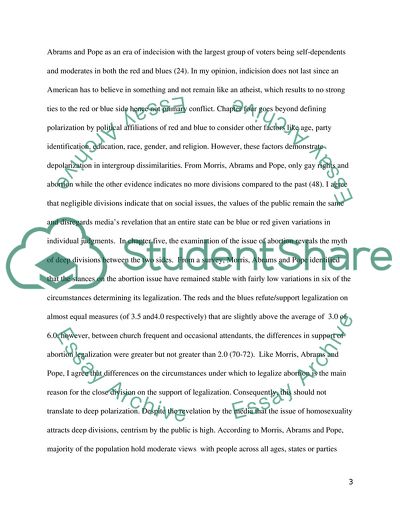Cite this document
(Critical Analysis of Culture War: The Myth of a Polarized America Book Report/Review, n.d.)
Critical Analysis of Culture War: The Myth of a Polarized America Book Report/Review. https://studentshare.org/politics/1834882-critical-book-review-fiorina-morris-samuel-j-abrams-jeremy-c-pope-culture-war-the-myth-of-a-polarized-america-3rd-edition-new-york-pearson-education-2010
Critical Analysis of Culture War: The Myth of a Polarized America Book Report/Review. https://studentshare.org/politics/1834882-critical-book-review-fiorina-morris-samuel-j-abrams-jeremy-c-pope-culture-war-the-myth-of-a-polarized-america-3rd-edition-new-york-pearson-education-2010
(Critical Analysis of Culture War: The Myth of a Polarized America Book Report/Review)
Critical Analysis of Culture War: The Myth of a Polarized America Book Report/Review. https://studentshare.org/politics/1834882-critical-book-review-fiorina-morris-samuel-j-abrams-jeremy-c-pope-culture-war-the-myth-of-a-polarized-america-3rd-edition-new-york-pearson-education-2010.
Critical Analysis of Culture War: The Myth of a Polarized America Book Report/Review. https://studentshare.org/politics/1834882-critical-book-review-fiorina-morris-samuel-j-abrams-jeremy-c-pope-culture-war-the-myth-of-a-polarized-america-3rd-edition-new-york-pearson-education-2010.
“Critical Analysis of Culture War: The Myth of a Polarized America Book Report/Review”. https://studentshare.org/politics/1834882-critical-book-review-fiorina-morris-samuel-j-abrams-jeremy-c-pope-culture-war-the-myth-of-a-polarized-america-3rd-edition-new-york-pearson-education-2010.


